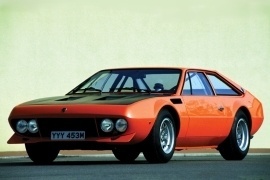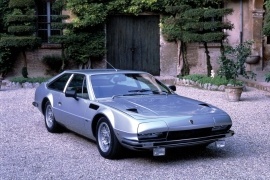
LAMBORGHINI Jarama
Generations Timeline, Specs and Pictures

This special car built by Lamborghini chief mechanic Bob Wallace who thought that Lamborghini cars should be less about comfort and more about speed.
So he took a Espada body, stiffened it, put a rollcage on it and mounted the engine further back in order to achieve a better balance. Rolling on Miura wheels with Michelin XWX tires with ventilated disc brakes, the Jarama Rallye was further “lightened” by cutting away sections of the floorpan and replacing them with aluminum. Instead of glass, Wallace used plexiglass which was lighter. The ned result was a 300 kg reduction of weight.

The 1970 Jarama was Lamborghini’s last front-engine vehicle until the 1986 LM002 off-road vehicle, and it tried to get into the hearts of the American customers.
With a love-it-or-hate-it design, the Jarama took its name from the Spanish race-track, even though it was a GT. Lamborghini sold it in the GT or GTS trim levels and built only 328 units. After that, it focused on mid-engined supercars that were far more appealing, and the Italian carmaker lost the battle against its main competitor, Ferrari.
After the soft and curved lines featured on its predecessor, the Islero, the Jarama came with a wedged-shaped bodywork that looks somehow impressive. At the front, it featured half-covered dual round headlights. Its turn-signals were mounted into the metallic front bumper. The flat hood sported two air-intakes on the sides to provide cold air to the engine. From the sides, the roof revealed a slight up-kick toward its end and a sloped back. Despite the hatchback styling, the Jarama featured a trunk lid that opened without the rear windscreen.
Inside, the Jarama offered four seats, even though those in the back were very hard to reach since the front ones didn’t tilt. Lamborghini installed a tall center console where it mounted the gear stick and the buttons for power windows. The carmaker chose an unusual place for the radio, between the seats, with the face forward, toward the center stack. It was straightforward to access if the driver knew where each button and turning knob was.
Under the hood, the carmaker installed a 4.0-liter V-12 engine that provided 350 hp. It paired it with a five-speed manual and sent the power to the rear wheels.























































